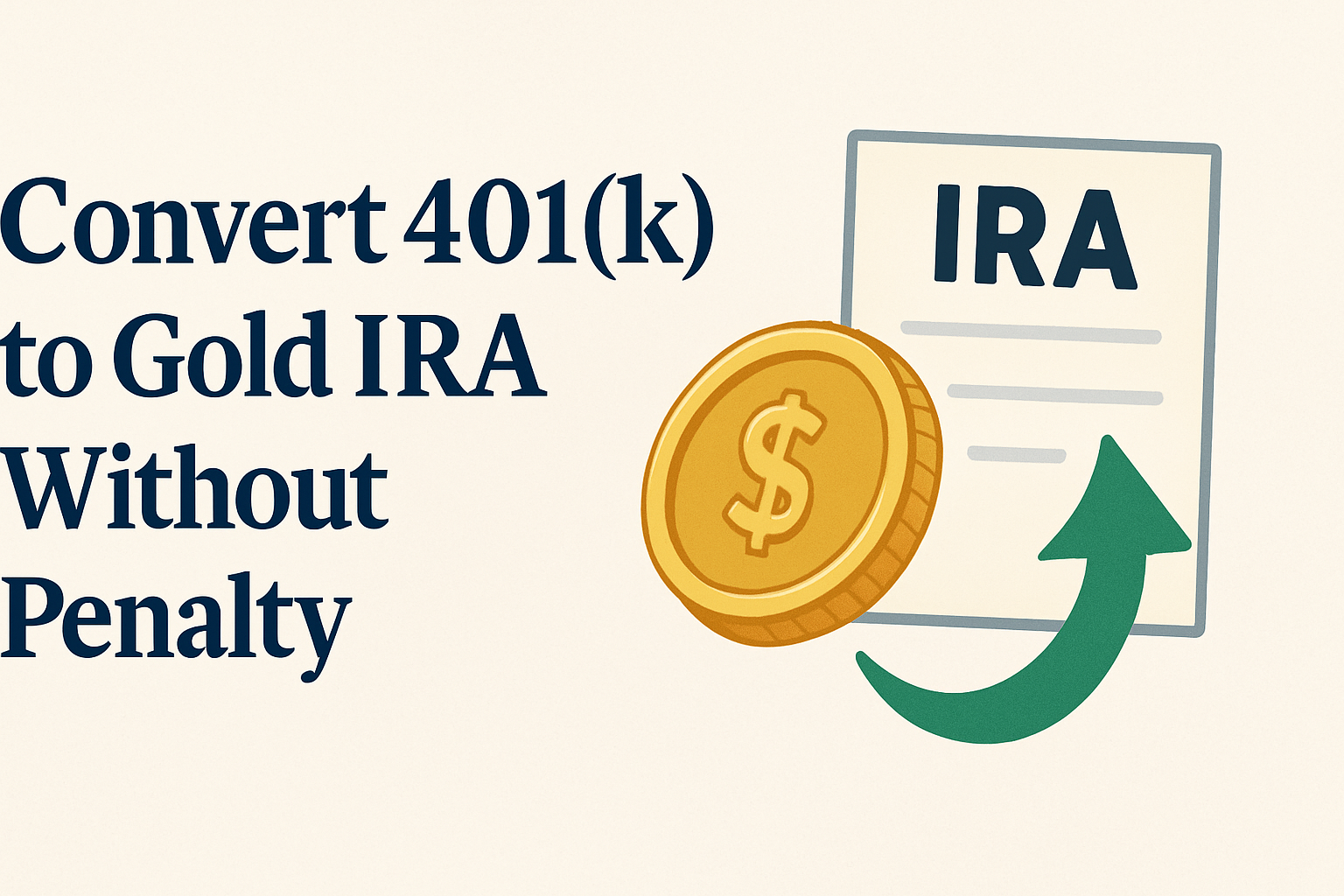Retirement planning can feel overwhelming. Between market fluctuations, tax implications, and the ever-changing economic landscape, safeguarding your future often means looking beyond traditional investments. One increasingly popular strategy is converting a 401(k) to a Gold IRA. The good news? You can do it without triggering penalties — if you follow the right steps.
In this guide, we’ll break down everything you need to know about converting your 401(k) into a Gold IRA, why it might be a smart move, and how to do it seamlessly and penalty-free.
Why Convert a 401(k) to a Gold IRA?
Let’s be honest: the stock market can be a rollercoaster. While stocks and mutual funds can generate growth, they also come with risk. Gold, on the other hand, has stood the test of time. Historically, it has acted as a hedge against inflation, economic downturns, and currency devaluation.

Here are a few compelling reasons to consider the switch:
- Diversification: Gold adds balance to your portfolio.
- Inflation Protection: Gold often retains value while fiat currencies lose purchasing power.
- Tangible Asset: You own a physical asset, not just paper promises.
- Economic Uncertainty: During times of financial instability, gold tends to perform well.
A Gold IRA offers the ability to hold physical gold (and other precious metals) in a tax-advantaged retirement account. It’s about security, stability, and a more diversified future.
Is It Legal to Convert a 401(k) to a Gold IRA Without Penalty?
Yes — with a few important caveats.
You can convert your 401(k) to a Gold IRA without incurring taxes or penalties, but you must follow IRS rules precisely. This typically involves a rollover or a direct transfer.
- Direct Transfer: Funds move from your 401(k) custodian directly to your Gold IRA custodian. No taxes, no penalties.
- 60-Day Rollover: You receive the funds and must deposit them into the Gold IRA within 60 days. Fail to meet the deadline? You’ll owe taxes and possibly early withdrawal penalties.
To ensure a smooth, penalty-free process, it’s wise to work with a reputable Gold IRA provider who understands the ins and outs of the tax code.
Step-by-Step Guide: How to Convert Your 401(k) to a Gold IRA
Step 1: Check Eligibility
Not all 401(k) plans allow for rollovers, especially if you’re still employed by the company. If you’re retired or have left your job, you’re usually eligible to roll over the account.
Step 2: Choose a Gold IRA Custodian
This is crucial. The IRS mandates that Gold IRAs be held by a qualified custodian. Look for a provider with:
- Experience and positive reviews
- Transparent fee structures
- IRS-approved storage solutions
- Knowledgeable support staff
Step 3: Open a Self-Directed IRA
A Gold IRA is a type of Self-Directed IRA (SDIRA), which allows alternative investments like precious metals. Your custodian will help you set this up.
Step 4: Initiate the Rollover or Transfer
Your Gold IRA custodian will coordinate with your 401(k) provider to execute the transfer. Opt for a direct transfer when possible to avoid tax implications.
Step 5: Select and Purchase Precious Metals
Once the funds are in your Gold IRA, it’s time to choose your investments. IRS-approved metals include:
- Gold (99.5% purity or higher)
- Silver (99.9%)
- Platinum (99.95%)
- Palladium (99.95%)
Your custodian will facilitate the purchase and secure storage in an approved depository.
Step 6: Securely Store Your Gold
IRS rules prohibit personal possession of Gold IRA assets. Your metals must be stored in an approved, insured depository.
Mistakes to Avoid When Converting to a Gold IRA
Even a small misstep can cost you. Here are the most common mistakes people make:
- Missing the 60-day deadline on rollovers
- Using a non-approved custodian
- Failing to buy IRS-approved metals
- Taking personal possession of the metals
These mistakes can trigger taxes, penalties, or disqualification of your IRA. That’s why working with an expert is non-negotiable.
What About Roth 401(k)s?
Good news: Roth 401(k)s can also be converted to Gold IRAs. However, the process differs slightly.
Because Roth accounts are funded with post-tax dollars, the rollover typically goes into a Roth Gold IRA, preserving the tax-free growth potential.
Again, direct transfers are key to avoiding penalties. Consult your custodian for tailored guidance.
Tax Considerations
When done properly, a rollover to a Gold IRA is a non-taxable event. But if the rules aren’t followed, it could result in:
- Ordinary income tax on the withdrawn amount
- A 10% early withdrawal penalty (if you’re under 59½)
Working with a tax-savvy custodian or financial advisor is the best way to keep Uncle Sam out of your retirement nest egg.
Is a Gold IRA Right for You?
A Gold IRA isn’t for everyone. It shines brightest for:
- Investors looking to diversify
- Those wary of stock market volatility
- People nearing retirement seeking more stability
- Anyone concerned about inflation or currency devaluation
That said, Gold IRAs should complement your broader portfolio. Think of it as an anchor, not the entire ship.
The Bottom Line
Converting your 401(k) to a Gold IRA without penalty is not only possible — it’s smart when done right. Gold offers a time-tested way to diversify your retirement and protect your wealth from economic shocks.
But this isn’t a DIY endeavor. Choosing a reputable custodian, following IRS rules, and staying informed are essential.
With the right help, you can make the move smoothly, without penalties, and with confidence in your financial future.
